Q
How much is a used 2019 Kia Optima worth?
If you're looking at a used 2019 Kia Optima in Malaysia, you're probably looking at a price tag somewhere between RM70,000 and RM120,000. Of course, where exactly it lands in that range depends on stuff like how the car's been kept, mileage, trim level, and service history. The higher-spec GT Line models or those with really low mileage will usually be pushing the upper end of that bracket.
The Optima, as a midsize sedan, has always been a hit with families thanks to its comfy interior, practical space, and solid all-round performance. The 2019 model, in particular, steps up with smart safety features like forward collision warning and lane keep assist, which definitely give peace of mind on the road.
When you're in the market for a used one, do yourself a favor and go through proper channels to check the vehicle history report—you want to make sure there are no accident records or major repair red flags. And always take it for a test drive to get a feel for how the engine and transmission are running.
On top of that, Kia's after-sales network in Malaysia is pretty well-established, and parts supply is relatively stable. That's definitely a plus for any used car owner. If your budget's a bit tight, you might also want to check out rival models from the same year, but make sure you weigh up the condition of the car and the after-sales support before making a call.
Special Disclaimer: This content is published by users and does not represent the views or position of PCauto.
Related Q&A
Q
Are 2019 Kias reliable?
The 2019 Kia models are generally above average when it comes to reliability, especially popular SUVs like the Sportage and Sorento, which have built up a solid reputation in the Malaysian market. Their powertrains, such as the 2.0L and 2.4L naturally aspirated engines, are pretty well-proven tech, and maintenance costs are relatively reasonable, making them a good fit for local road conditions and climate. That said, some owners have mentioned occasional minor niggles with electronics—think touchscreen glitches or sensor hiccups—so it’s definitely worth getting a professional inspection before buying to check the car’s condition.
One thing that stands out is that most 2019 Kia models come equipped with smart safety features like lane keep assist and automatic emergency braking, which is a nice plus for this price bracket. For Malaysian consumers, regular maintenance is a must, especially since the tropical climate can take a toll on rubber components and cooling systems. Sticking with authorized dealerships or certified service centers will go a long way in keeping the vehicle in good shape. If you’re looking at a used model, prioritize ones with a complete service history and make sure to check for any flood damage—these details really matter for long-term reliability.
Q
What is the 2019 Kia engine lawsuit?
The 2019 Kia engine lawsuit primarily targeted Theta II GDI engines found in select 2011-2019 model-year vehicles sold in the U.S. market. The legal action alleged these engines might have a defect that could lead to unexpected stalling or even fire risks. In response, Kia rolled out related recalls and extended warranty programs to address the issues. For Malaysian consumers, while this lawsuit was mainly focused on the North American market, understanding international automotive recall mechanisms still holds value. After all, cars are global products, and manufacturers typically take corresponding measures across different markets based on technical investigation findings. If Malaysian Kia owners have concerns about their vehicle's condition, it's advisable to check their car's VIN through official channels to see if it falls under any technical campaigns. Additionally, following the manufacturer's recommended regular maintenance schedule is an effective way to prevent potential problems. It's worth noting that the Hyundai Motor Group (which includes Kia) has continued to invest heavily in engine technology in recent years. Their new Smartstream engine lineup has incorporated more reliability improvements, demonstrating the manufacturer's commitment to technical optimization.
Q
Is Kia Korean or Japanese?
Kia, a South Korean automotive brand founded in 1944 and headquartered in Seoul, is now a subsidiary of the Hyundai Motor Group, together forming the twin pillars of South Korea's automotive industry alongside Hyundai. Kia's vehicle lineup spans sedans, SUVs, MPVs, and electric vehicles, characterized by youthful design aesthetics and feature-packed technology. In the Malaysian market, models like the Kia Carnival, Seltos, and Sportage have struck a chord with consumers, thanks to their strong value proposition and generous warranty packages – some models even come with a 5-year unlimited mileage warranty, which is a big plus.
While Japanese brands such as Toyota and Honda enjoy significant popularity in Malaysia, Kia has carved out its own niche with its distinct Korean design language and global tech offerings, including Smartstream engines and the UVO connected car system. It's worth noting that Malaysia's automotive market is diverse and open, giving consumers the freedom to choose from brands across the globe. Korean cars tend to emphasize technology and design, Japanese models are renowned for their reliability and low maintenance costs, and Kia, in particular, has been making inroads with its hybrid and electric vehicles – the EV6, for instance – gradually entering the Malaysian scene and offering fresh options for eco-conscious drivers.
Q
Are 2019 Kia Optima good cars?
The 2019 Kia Optima is a solid contender in Malaysia's midsize sedan market, winning over many buyers with its well-rounded performance, comfortable ride, and generous equipment list. Under the hood, you'll find 2.0L and 2.4L naturally aspirated engines that deliver smooth power – perfect for city driving – while also returning decent fuel economy, which lines up nicely with what Malaysian drivers look for in a daily runabout.
Inside, the Optima goes for a clean, functional design. The center console features an 8-inch touchscreen with Apple CarPlay and Android Auto, giving it a good tech vibe. Safety-wise, it's kitted out with six airbags, stability control, and a reverse camera, offering peace of mind on the road.
The suspension is tuned more for comfort, doing a great job of soaking up bumps and irregularities, which is handy given Malaysia's varied road conditions. Now, it's worth noting that the Optima might not hold its value as well as some Japanese rivals in the used car market. But if you're prioritizing bang for your buck and a well-equipped interior, the 2019 Optima still makes a strong case for itself.
Kia's after-sales network in Malaysia is relatively comprehensive too, making servicing and maintenance pretty hassle-free – definitely a plus for owners.
Q
What is the recall on the 2019 Kia Optima engine?
The 2019 Kia Optima was recalled in some markets due to a potential engine issue, specifically related to manufacturing defects in the 2.4-liter Theta II GDI engine. These defects could lead to abnormal wear of internal components or insufficient oil circulation, and in extreme cases, pose a risk of engine stalling or even fire. Affected vehicles need to be taken back to the dealership for a free replacement of improved engine components or an ECU software update. Malaysian owners can check if their vehicle is included in the recall by entering their VIN on Kia Malaysia's official website, or by contacting an authorized service center directly. Such recalls are part of automakers' proactive approach to safety responsibilities. Hyundai Motor Group has implemented an extended warranty program for the Theta II engine series to enhance customer protection. It's advisable for owners to regularly check their oil condition and perform timely maintenance. If the engine warning light comes on, unusual noises occur, or there's a drop in power while driving, the vehicle should be inspected immediately. Malaysia's hot climate can add extra strain on the engine, so adhering to the original maintenance schedule and using the specified oil can effectively reduce potential risks.
Q
How much is a 2019 Kia Optima worth used?
If you're scouting for a used 2019 Kia Optima in Malaysia, you'll typically find prices ranging from around RM70,000 to RM120,000. The actual figure hinges on several factors: the car's overall condition, mileage, trim level, and service history. For instance, top-spec GT Line models or low-mileage gems might nudge closer to that upper end, while base variants or higher-mileage examples will sit more towards the lower side of the scale.
The Optima holds its own in Malaysia's pre-owned market, thanks to its comfy cabin, practical space, and well-rounded performance. The 1.6T and 2.0L engine options are particularly popular with family buyers, striking a nice balance between fuel efficiency and adequate power.
If you're looking to buy, here’s the drill: Always get a PUSPAKOM inspection to verify the mechanical health, and check the original service records to ensure there are no major accident red flags. It’s also smart to compare prices on local platforms like Carlist or Mudah to get a feel for the market. On top of that, Kia’s got a pretty solid after-sales network here, with reliable parts supply – that’s definitely a plus for keeping the resale value steady down the line.
Q
What kind of oil does a 2019 Kia Optima take?
For the 2019 Kia Optima in Malaysia, the recommended oil viscosity is 5W-20 or 5W-30 full synthetic oil that meets or exceeds API SN specifications. If your ride has a turbocharged engine, we'd lean toward 5W-30 for that extra high-temperature protection—it's worth it. Malaysia's hot and humid climate is no joke, so full synthetic oil handles the heat better and lets you stretch oil changes to around 10,000 km or 6 months, whichever comes first.
Kia Genuine Oil is obviously dialed in for the engine, but you've got options—big names like Shell Helix, Castrol Edge, or Petronas Syntium with the same specs work just fine. When you do the oil change, don't skip swapping the oil filter too (genuine is best) to keep that filtration working properly.
If your Optima's racked up over 80,000 km, think about stepping up to 5W-30 or even 5W-40 for better seal integrity—but always check the owner's manual or hit up an authorized service center first. It's all about balancing fuel economy and engine protection. And if you're regularly doing long hauls or carrying heavy loads, you might want to play it safe and shorten the interval to 7,000-8,000 km.
Q
What kind of battery does a 2019 Kia Optima take?
The 2019 Kia Optima in the Malaysian market typically comes equipped with a 12-volt lead-acid battery, most commonly the H6 (Group 48) size or a similar maintenance-free variant. Given Malaysia's tropical heat, we'd strongly recommend a cold cranking amp (CCA) rating of 650A or higher to ensure reliable starts even on scorching days. When replacing, double-check that the physical dimensions and terminal positions match the original to avoid fitment headaches. For this climate, prioritizing a battery with strong high-temperature tolerance is key – AGM (Absorbent Glass Mat) batteries are a solid upgrade here. They handle the stop-start demands and short trip duty cycles much better, maintaining stability where conventional batteries might struggle.
Malaysian Optima owners, listen up: regular battery health checks are non-negotiable. The intense heat here accelerates electrolyte evaporation and plate corrosion. Make it a habit to inspect the terminals every 6 months – keep 'em clean! Also, check the voltage; a healthy, fully charged battery should read around 12.6V. If your Optima has a smart charging system, ensure your new battery is compatible to avoid any electrical gremlins. And for those who frequently drive through heavy rain or flooded areas? A battery with superior sealing will help prevent moisture ingress and potential damage. Finally, if you're parking the car for an extended period, investing in a battery maintainer is a smart move to keep it topped up and extend its life.
Q
How much is an oil change for a 2019 Kia Optima?
For a 2019 Kia Optima in Malaysia, an oil change typically runs between RM150 and RM300. The exact price hinges on the type of oil you go for—mineral, semi-synthetic, or fully synthetic—and where you decide to get the service done. Authorized Kia service centers might charge a bit more, but you’re getting genuine parts and the peace of mind that comes with their warranty coverage. Third-party workshops, on the other hand, usually offer a more budget-friendly route.
Sure, fully synthetic oil costs more, around RM250 to RM300, but it’s a solid investment. It provides superior engine protection and lets you stretch the interval between changes to about 10,000 kilometers. Mineral oil, which sits in the RM150 to RM200 range, needs swapping out every 5,000 kilometers, so keep that in mind for long-term costs.
My advice? Pick the oil that best fits your driving style and wallet. Regular maintenance is key to keeping that engine running strong, so don’t skip those service dates. Oh, and always make sure they replace the oil filter too—you want that lubrication system clean and working at its best. And hey, the owner’s manual has all the deets on the Optima’s recommended service schedule. Sticking to Kia’s guidelines will help your car last longer and perform at its peak for years to come.
Q
How long does a 2019 Kia Optima last?
The 2019 Kia Optima, when driven normally and serviced regularly here in Malaysia, can typically clock up 200,000 to 300,000 kilometers or even more. Its actual lifespan really hinges on things like driving habits, how often you service it, and the road conditions it's subjected to. The Optima has built a solid reputation around its dependable powertrains – think the 2.0L and 2.4L naturally aspirated engines, as well as the 1.6L turbo. Paired with a 6-speed automatic gearbox, this setup is well-tuned and known to hold up nicely over time.
To keep your Optima running strong for the long haul, I'd recommend sticking to a regular service schedule – aim for every 6 months or 5,000 to 10,000 kilometers, whichever comes first. That should include the usual suspects: oil and filter changes, checking the brakes, and inspecting the tires. Malaysia's tropical climate can be tough on batteries and rubber components, so keeping an eye on those is extra important to prevent premature wear.
Another pro tip: using genuine parts and strictly following the manufacturer's service manual can make a world of difference in keeping the car reliable. Do all that, and the Optima won't just last; it'll maintain that nice driving feel too. It's a solid mid-size sedan that offers great bang for your buck. If you're in the market for a used Optima, definitely dig into the service records and vehicle history to make sure you're getting one that's been well looked after.
Latest Q&A
Q
How much can a 2023 Triton tow?
The 2023 Mitsubishi Triton delivers a max towing capacity of 3.1 tonnes (3,100 kg) in the Malaysian market. This figure applies to the automatic variants equipped with the 2.4-liter turbo diesel engine – a powertrain that, paired with its robust low-end torque (430 Nm @ 2,500 rpm) and reinforced chassis setup, makes it a standout choice for towing in the pickup segment.
It’s crucial to remember that real-world towing performance depends on factors like trailer type, load distribution, and road conditions. Always stick with the factory-recommended tow hitch and ensure your braking system is properly matched. Malaysia’s hilly terrain especially calls for extra attention to the engine braking assist when heading downhill.
Rivals like the Toyota Hilux and Ford Ranger also hover around the 3-tonne mark, though exact numbers vary slightly based on transmission and tuning. Before buying, it’s worth comparing the towing package options each brand offers – Mitsubishi’s Trailer Sway Control for the Triton, for example, does a solid job boosting stability during long-haul towing.
If you’re regularly hauling heavy loads, make it a habit to check transmission fluid temperatures and cooling system health. These small details directly impact how well the truck holds up during sustained towing in our tropical climate.
Q
What engine does the 2023 Triton have?
The 2023 Mitsubishi Triton hits Malaysian shores with two diesel engine options: the 2.4-liter MIVEC Turbo Diesel (code 4N16) and the 2.5-liter Turbo Diesel (code 4D56). Taking center stage is the 2.4-liter mill, cranking out 181 horsepower and a healthy 430 Nm of torque. It pairs with either a 6-speed manual or a slick 6-speed automatic transmission, boasting improved fuel efficiency and that sweet low-end torque punch that makes it a solid fit for Malaysia's diverse road conditions.
What's cool about this engine is Mitsubishi's use of an aluminum cylinder block to shed weight, plus a Variable Geometry Turbo (VGT) for snappier response. And yes, it meets Euro 5 emission standards, a testament to Mitsubishi's know-how when it comes to diesel power. For folks who regularly haul cargo or tow, that 430 Nm torque figure means heavy loads are handled with ease. The 6-speed auto, meanwhile, keeps things smooth in the city, making daily drives less of a hassle.
As a popular pickup in Southeast Asia, the Triton's engine is built tough to handle tropical climates too. Think beefed-up cooling systems and anti-corrosion treatments – crucial stuff for Malaysia's rainy, humid weather. It’s clear Mitsubishi didn’t cut corners when it comes to durability here.
Q
What is the fuel consumption of the 2023 Triton?
The fuel economy of the 2023 Mitsubishi Triton varies depending on the trim and drivetrain. Official figures show the 2.4L turbo diesel (4N16 engine) returns around 7.6L/100km in two-wheel drive manual guise, while four-wheel drive auto models sit closer to 8.5L/100km. Of course, real-world numbers will fluctuate based on driving style, road conditions, and payload.
For Malaysian buyers, the Triton's diesel powerplant plays well with local fuel quality. Its strong low-end torque makes it a solid companion for mixed urban-rural driving—especially folks who regularly haul cargo or tow will appreciate the balance of fuel efficiency and rugged durability. It's worth noting that while diesel typically offers better pump prices than petrol, maintenance costs can run slightly higher. Sticking to regular fuel system and turbo component servicing is key to keeping things running optimally.
If you're looking to squeeze extra km from each tank, avoid aggressive acceleration, minimize idling time, and don't skip air filter replacements—simple habits that go a long way.
Q
How much is Mitsubishi Triton 2023 in Malaysia?
The 2023 Mitsubishi Triton's pricing in Malaysia varies depending on the trim and configuration. The base Triton Quest MT starts at around RM92,900, while the range-topping Triton Athlete 4x4 AT comes in at approximately RM146,900. These figures might fluctuate slightly based on dealer promotions or optional extras.
Under the hood, this pickup truck is powered by a 2.4-liter turbocharged diesel engine, available in two tunes: 150PS with 400Nm of torque and 181PS with 430Nm. It's paired with either a 6-speed manual or automatic transmission, and some models even feature Mitsubishi's Super Select 4WD-II system, making it a solid performer across various terrains.
As one of the top picks in Malaysia's pickup scene, the 2023 Triton steps up its game with a more aggressive exterior design. Inside, you'll find upgrades like a 9-inch infotainment screen and smarter connectivity features. On the safety front, all trims come standard with 7 airbags, ABS+EBD, and hill-start assist, to name a few.
What really gives the Triton an edge is its CKD (completely knocked down) status in Malaysia, which translates to lower import duties. This not only makes it more budget-friendly compared to some fully imported rivals but also keeps maintenance costs relatively reasonable. All in all, if you're a Malaysian buyer looking for a pickup that balances workhorse capability with everyday practicality, the Triton should definitely be on your shortlist.
Q
Is the 2023 Alphard fuel efficient?
The 2023 Toyota Alphard delivers pretty average fuel economy. Its 2.5-liter hybrid setup returns around 6.5 to 7.2 liters per 100km in mixed Malaysian city driving, and can dip to 5.8-6.3 liters/100km on the highway. For a luxury seven-seat MPV, that's totally reasonable – and honestly, it's way more efficient than a comparable pure gasoline model. But here's the thing: hybrid efficiency really depends on how you drive and the roads you're on. Take it easy on the accelerator and brake predictively, and you'll squeeze even more km out of each liter.
Malaysian buyers should think hard about their actual needs. If you're often hauling a full load on long trips, the Alphard's spacious cabin and comfort might matter more than eking out every last drop of fuel. But if you're mostly stuck in stop-and-go city traffic, the hybrid system's electric-drive advantage at low speeds will shine.
Before you sign on the dotted line, check out the Malaysian Energy Efficiency Vehicle (EEV) certification data. More importantly, take it for a proper test drive to see how it actually performs in different road conditions. And don't forget, regular maintenance is key to keeping that fuel economy in check – stuff like changing the air filter on time and using the right viscosity oil.
View MoreRelated News
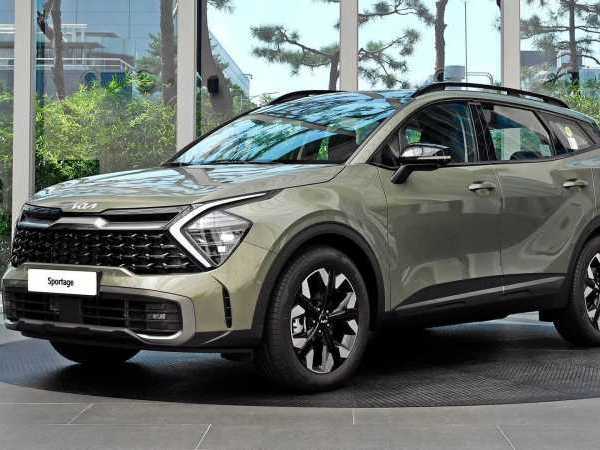
Kia Sportage: Superior Suspension for Smooth Ride
Kevin WongMay 19, 2025
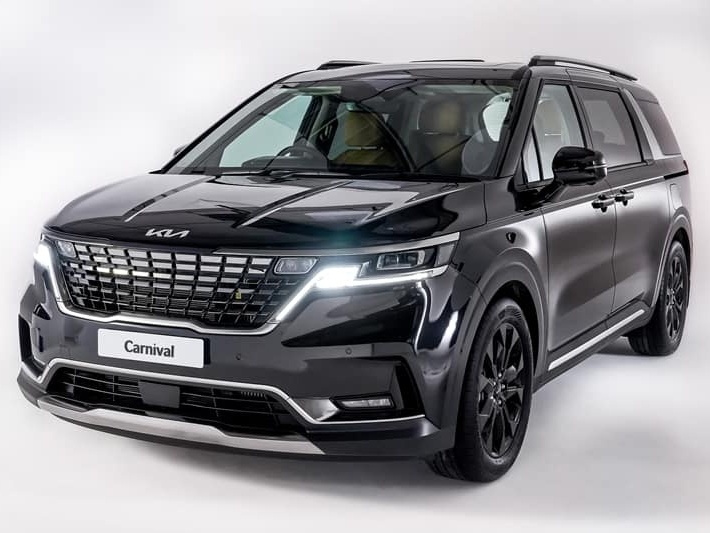
Kia Carnival: Spacious & Versatile for Every Journey
Kevin WongMay 19, 2025
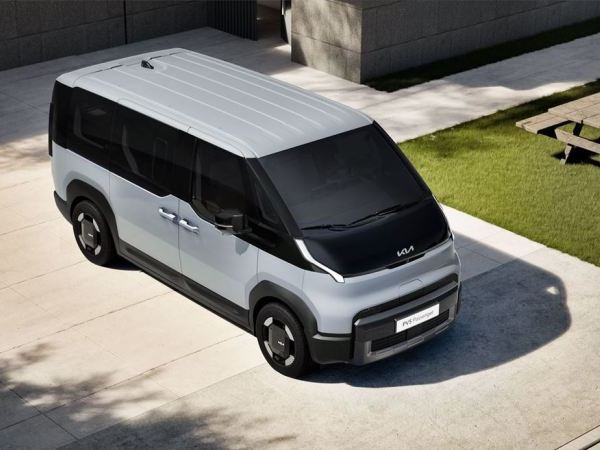
Kia reveals all details of PV5, with a maximum range of up to 400 kilometers
LienMar 11, 2025
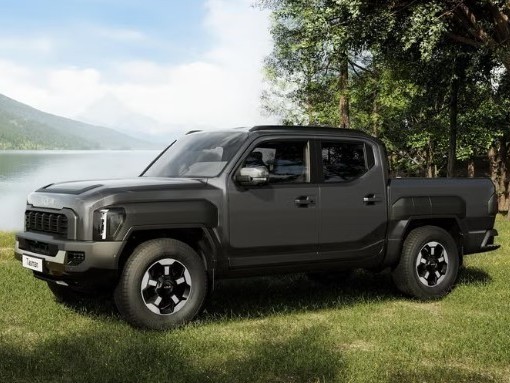
173L cargo box, 3500kg towing capacity, KIA Tasman meets all your needs!
MichaelOct 31, 2024

The interior of Kia's brand new pure electric sedan EV4 is exposed, expected to debut in mid-2025
MichaelOct 9, 2024
View More












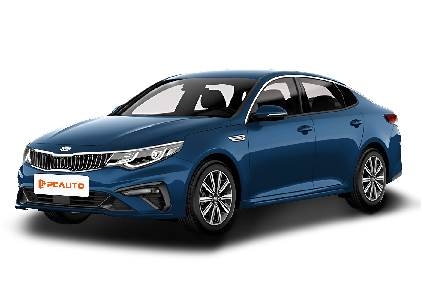
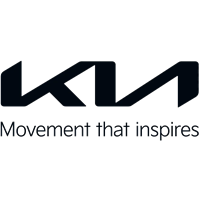 Cars
Cars




Pros
Cons